
Undoubtedly,
Carl Barks
made frequent use of reference
books, such as his beloved National Geographic magazines, when portraying the
many different aeroplanes used in his Disney comic book stories. Being the
perfectionist he was it was important for him to render the machines as
accurately as possible, of course within the normal graphic limitations of the
media, and he chose a wide range of diverse plane types suitable for the
individual scenes and missions. All the planes in Barks' stories are based on specific means
of transport from our world, and this page attempts to 'decode' some of them and
make a comparison between the real planes and Barks' renderings. You should be
aware that Barks did not necessarily copy the planes to a T, as he exercised his right to render the images as he saw fit. Also, it is only
natural that he never used a specific plane name in his stories in order not
to mix our world into the duck universe world, but most of the time it is rather
obvious which planes he copied.
The collection presented below (arranged in no special order) is by no means
complete. The focus has been on displaying the more unusual or interesting types
instead of, say, tedious renderings of the many common planes the ducks have
used as simple transportation when travelling abroad.
You are not
served with any technical information of the real planes such as engine data,
number of seats, or airspeed, because detailed information on the planes are
rather irrelevant in connection with the stories. You are only presented to the
assumed, approximate plane types and their names in order for enthusiasts to
easily seek further information if they so wish. If you should happen to
disagree with some of the asserted deductions - or if you have additional
relevant information - you are welcome to contact this website.
Disclaimer:
You should be aware that a number of the photos may depict later models as not all exact models
from the time have been found for use on this page (the correct photos, on the
other hand, are quite old and not exactly in mint condition). This will also mean
inconsistencies as to the precise number of windows, exact shapes of tail rudders,
accurate renderings of undercarriages, and so on.
|
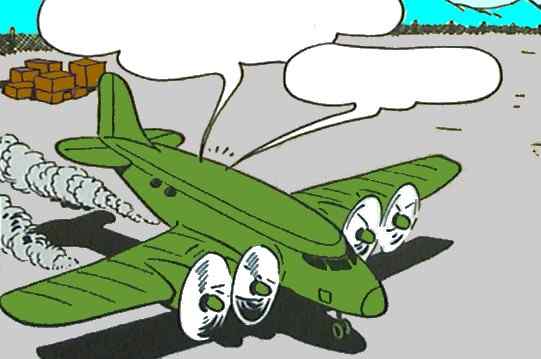
WDCS133 'Truant Officer Troubles' |
|
|
|
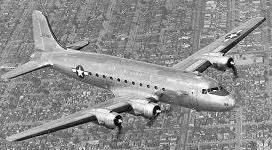
Douglas C-54
Skymaster |
|
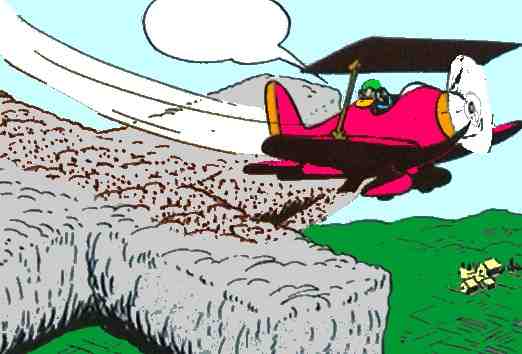
WDCS156 'Master Rainmaker' |
|
|
|
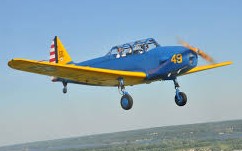
Fairchild PT-19 |
|

U$44 Crown of the Mayas |
|
|
|
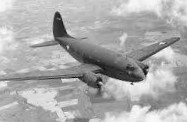
Curtiss C-46 Commando |
|
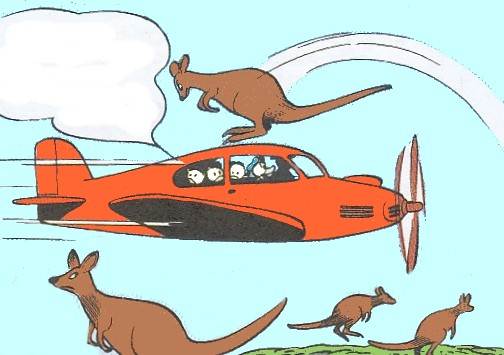
FC0159 Adventure Down Under |
|
|
|
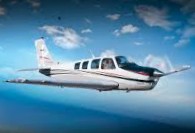
Beechcraft Bonanza |
|
|
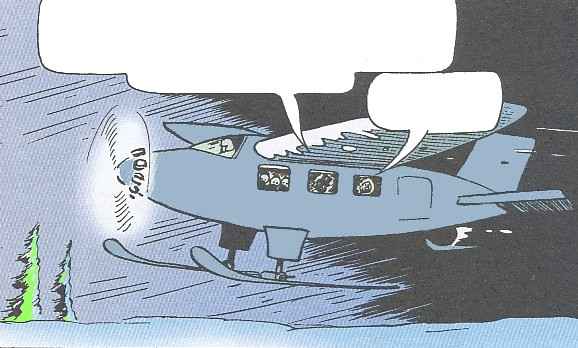
U$59 North of the Yukon |
|
|
|
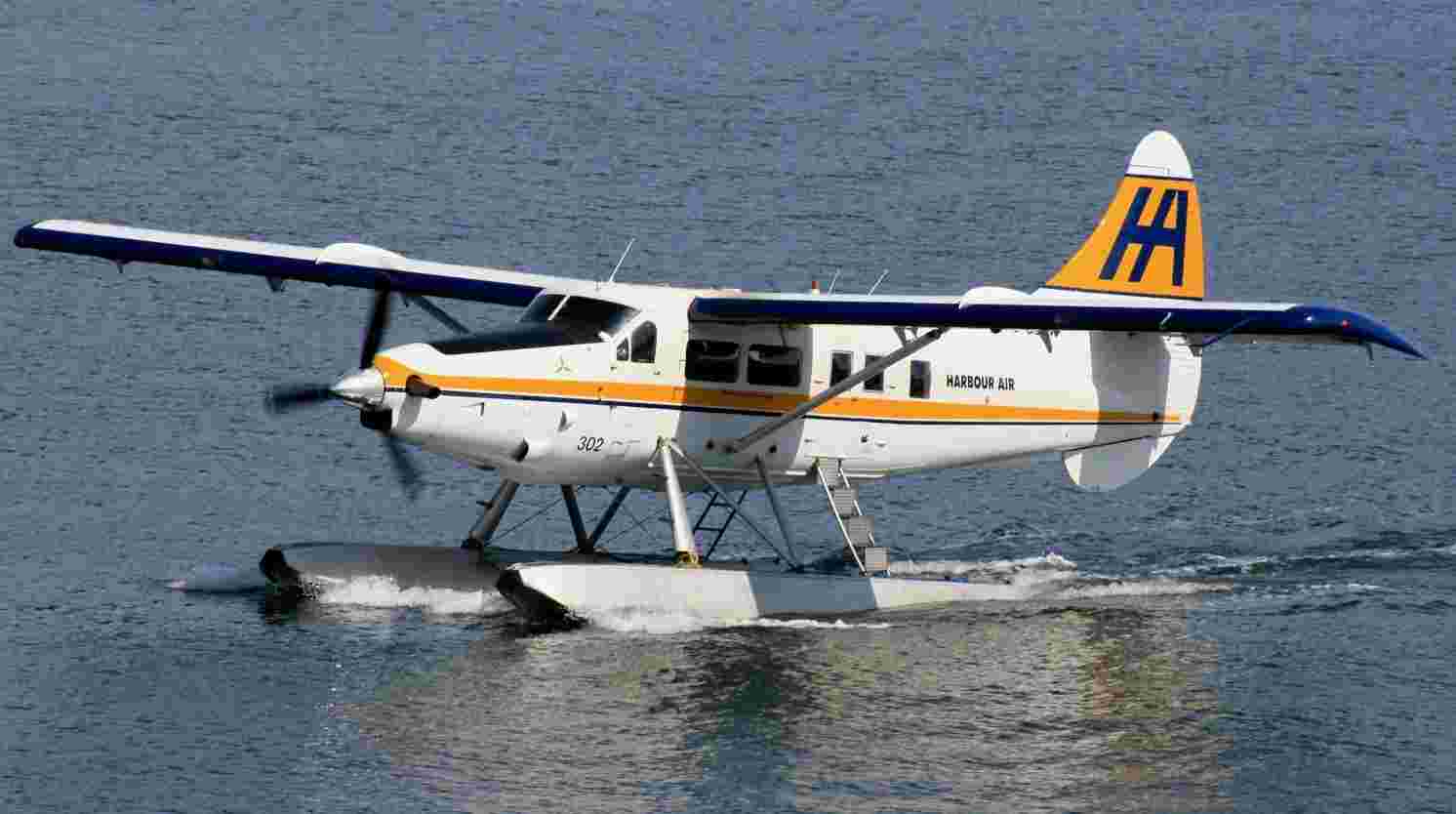
de Havilland DHC-Otter |
|
|
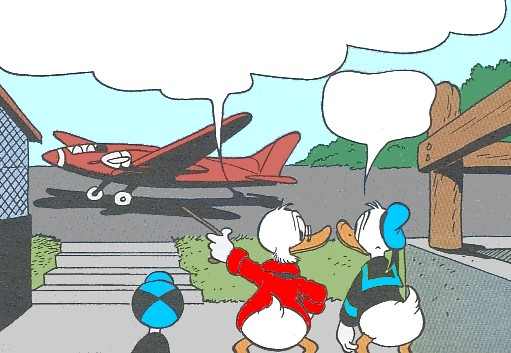
FC0263 Trail of the Unicorn |
|
|
|
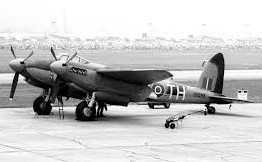
de Havilland DH 98 Mosquito |
|
|

U$31 Two Way Luck |
|
|
|
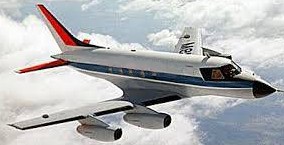
McDonnell 119/220 |
|
|
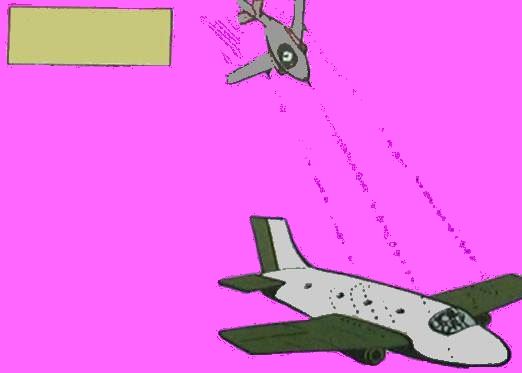
U$52 The Great Wig Mystery |
|
|
|
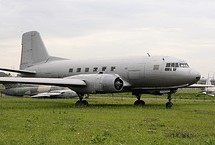
Ilyusjin IL-14 |
|
|
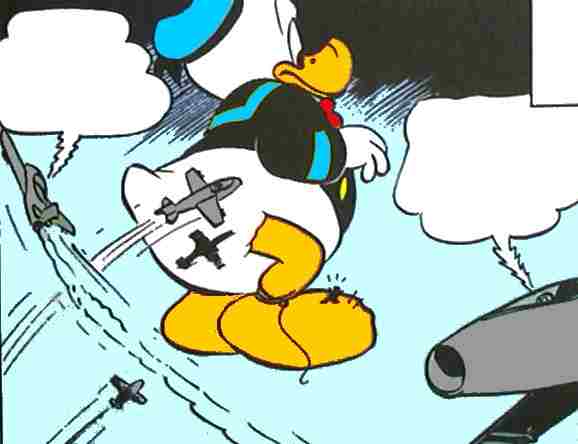
WDCS242 Balloonatics |
|
|
|
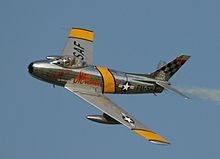
F-86F Sabre |
|
|
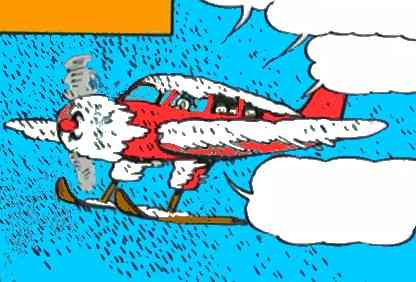
FC0062 Frozen Gold |
|
|
|
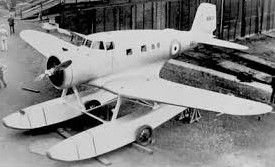
Northrop Delta |
|
|

WDCS246 Lost Frontier |
|
|
|
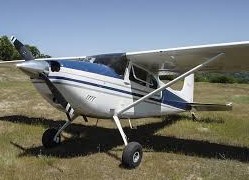
Cessna 180 Skywagon |
|
|
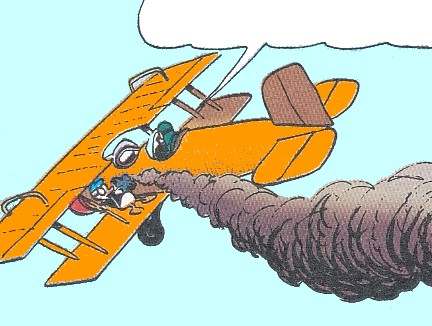
WDCS240 The Fraidy Falcon |
|
|
|

Sopwith Camel |
|
|
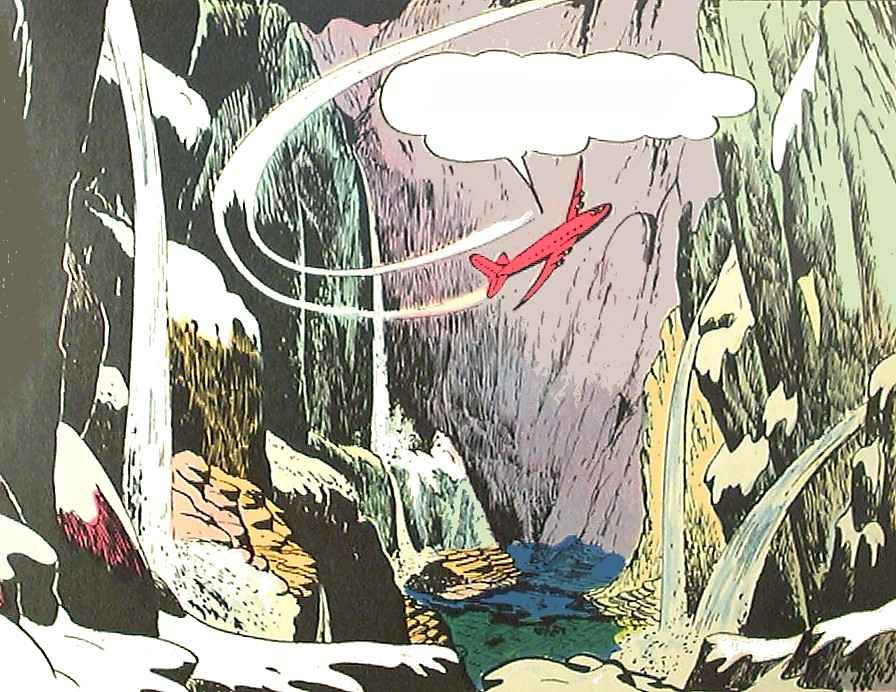
U$06 'Tralla La' |
|
|
|
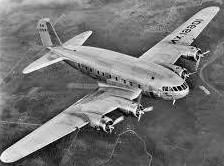
Boeing 307 Stratoliner |
|
|
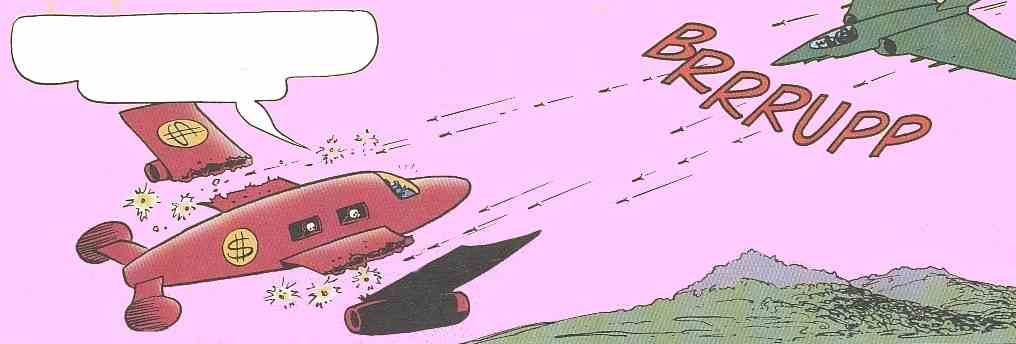
U$61 So Far and No Safari |
|
|
|
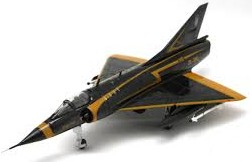
Dassault Mirage IIICZ |
|
|
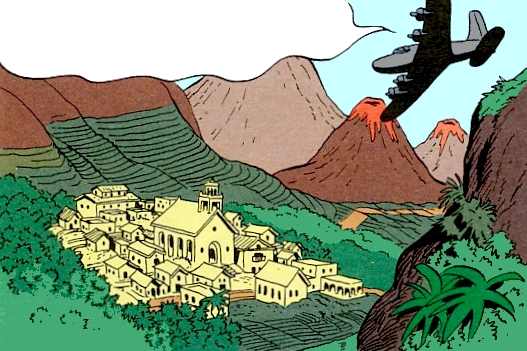
FC0147 Volcano Valley |
|
|
|
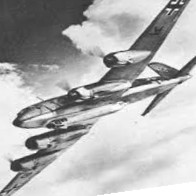
Focke Wulf 200 Condor |
|
|
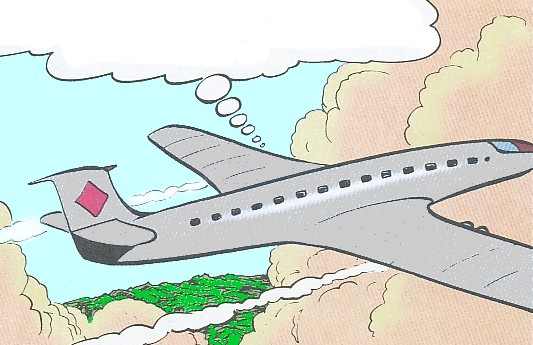
U$39 A Spicy Tale |
|
|
|
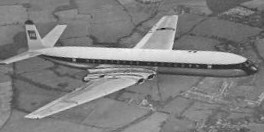
de Havilland Comet 4B |
|
|
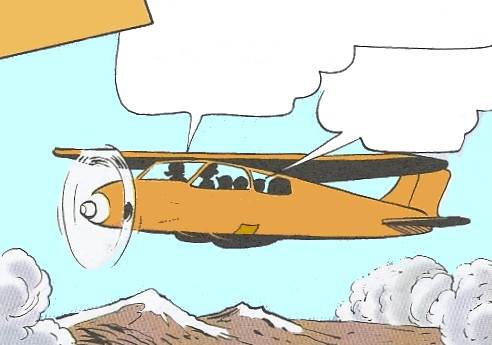
U$36 Money Bag Goat |
|
|
|
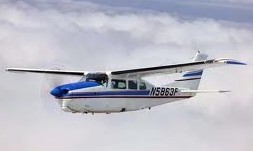
Cessna 210 Centurion |
|
|
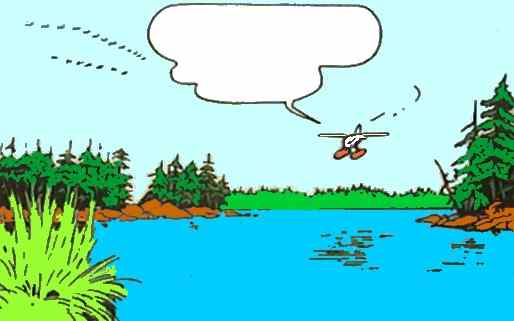
U$18 Land of the Pygmy Indians |
|
|
|
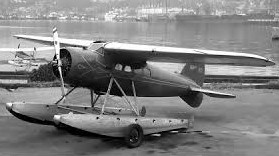
Lockheed Vega |
|
|
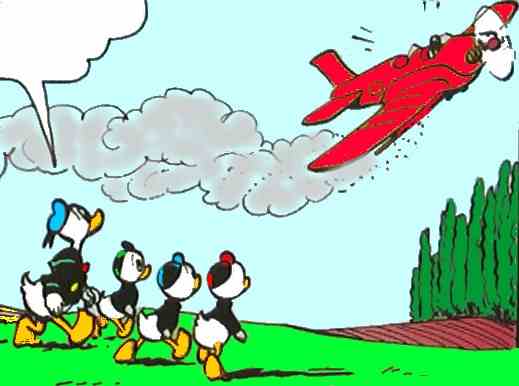
WDCS229 The Good Deeds |
|
|
|
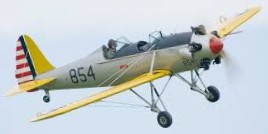
Ryan PT-22 Recruit |
|
|
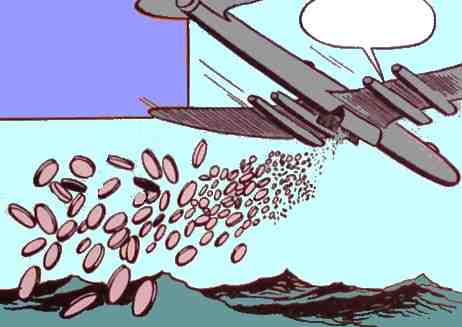
U$05 'Atlantis' |
|
|
|
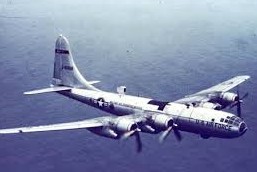
Boeing B-50 Superfortress |
|

WDCS194 'The Smokewriter' |
|
|
|
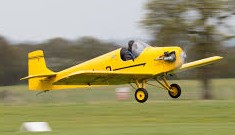
Druine D31 Turbulent |
|
|
EXCEPTIONS
|
|
In a few instances Barks deviated from drawing
plausible real planes and chose to go with planes that looked real at a glance
but were just drawn from memory. He decided not to copy material
which - probably without him even knowing it - brought him into trouble by
rendering faulty planes. Another reason could have been that he purposely
abstained from his relatively precise renderings in order to obtain a dramatic
effect. Below are shown two graphic examples:
|
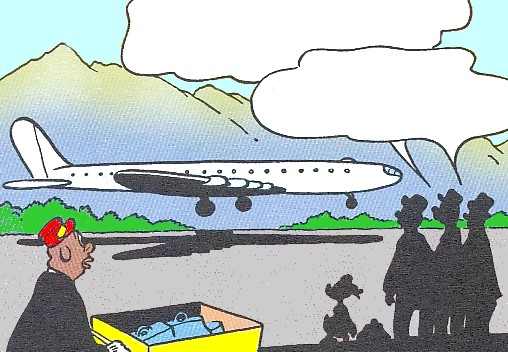
FC0238 Voodoo Hoodoo |
|
|
|
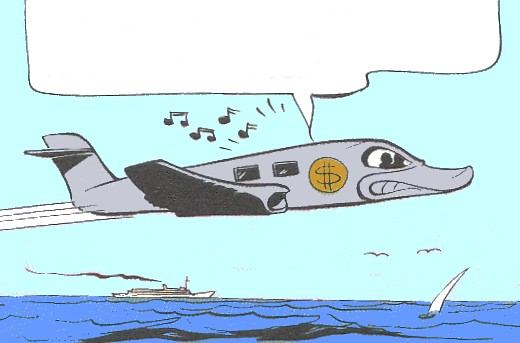
U$62 Queen of the Wild Dog Pack |
In
FC0238 Voodoo Hoodoo Barks dreamt
up his own type of plane in order to let Scrooge impress the onlookers
at the African airport. The machine has 8 engines spaced out on the
wings, which in itself is an achievement, because only one plane in the
world had so many engines at the time. It was the Boeing B-52
Stratofortress, and they are attached in pairs under the wings.
Furthermore, the Boeing plane's wings are aligned with the top of the
plane's body and not the bottom.
In
U$62 Queen of the Wild Dog Pack Barks drew another
plane that has never existed in real life. The most obvious deviations
are the prolonged sneering duck beak and the 'howling' jet engine inlet. For
a common business jet the
engines are also rendered improperly. If they are attached to the wings there
should be 4 engines, otherwise there should be 2 or 3 sitting at the back
of the body. Also, the vertical stabilizer fins are disputable, as they
should be either sitting on top of the tail rudder or on the body of the
plane. Presumably, Barks just intended to display an aggressive
looking plane of his own invention. If he had consulted his magazines he
could have chosen several correct examples such as McDonnell or Dassault. |
http://www.cbarks.dk/THEAEROPLANES.htm
|
|
Date 2014-11-29 |

